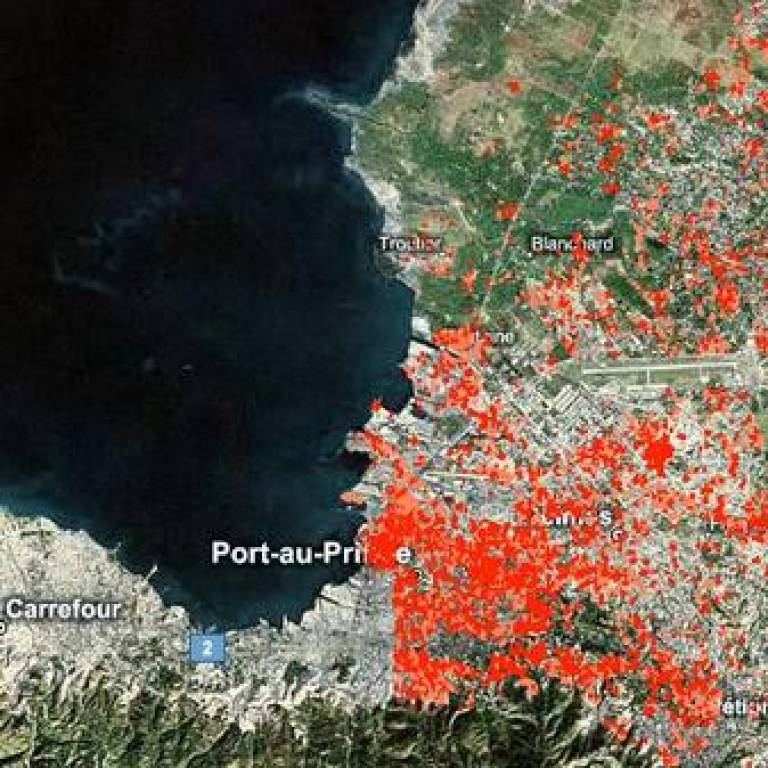Earthquake experts focus on helping Haiti
29 January 2010
Scientists and engineers from UCL are using an innovative web tool to share their expertise help Haiti's earthquake victims.

They have helped to develop the Virtual Disaster Viewer (VDV), a unique web portal that aid agencies rely on to target emergency food and medical supplies, prioritise repairs to infrastructure, and plan reconstruction and recovery.
UCL's contingent are among the hundreds of earthquake scientists and engineers working with the VDV to access high-resolution 'before and after' satellite and aerial photos of the disaster zone.
Each expert is assigned a number of kilometre grids for damage assessment, with an area of over 300 square kilometres covered in all. The satellite and aerial photos show details down to the level of individual buildings, cars, vegetation and even folds in tents in temporary encampments. The experts then submit detailed assessments about the type and extent of damage caused to buildings, roads, bridges and other key infrastructure, and of where refugees are congregating.
The VDV collates this information to build up a master map of the damage and dislocation caused across the whole disaster zone. It can also integrate aerial intelligence with detailed ground-based photos as it allows field reconnaissance teams to upload photos in real-time. The data can be accessed through any internet-connected device.
Dr Tiziana Rossetto, who is based at UCL Civil, Environmental and Geomatic Engineering and leader of the university's Earthquake People and Interaction Centre, has played a leading role in the development of the VDV.
She said: "This is an excellent example of how research can be developed into an end-product capable of delivering tangible humanitarian benefits in a real-life crisis of shocking proportions."
Click on the media player below to hear Dr Rossetto discuss her work on the VDV
This use of the VDV is being funded by the World Bank and co-ordinated by ImageCat, a US- and UK-based company providing advanced technologies for risk and disaster management.
ImageCat's UK Director Beverley Adams, who did her first degree and PhD at UCL Geography, said: "The VDV enables rapid mobilisation of leading-edge global expertise for rapid and detailed interpretation of earthquake damage. For relief agencies dealing with an appalling tragedy like the Haiti earthquake, speed is of the essence. Working with the World Bank, we're confident that the VDV is making a real difference in helping to bring desperately needed aid to Haiti's shattered community."
The VDV, whose development was supported by the Engineering and Physical Sciences Research Council, is also suitable for use in disaster situations such as hurricanes, tsunamis and floods.
For more information about the VDV follow the link above. Dr Rossetto will discuss her work on the VDV in a Channel 4 documentary Haiti's Killer Quake: Why It Happened, which airs at 9pm on Tuesday 2 February.
Image: satellite picture of Haiti in the VDV with red points showing sites of greatest damage
- Links:
- UCL Civil, Environmental and Geomatic Engineering
- Engineering and Physical Sciences Research Council
UCL context
UCL's Earthquake People and Interaction Centre aims to bring together earthquake engineers, social scientists, coastal engineers and statisticians to provide guidance for key decision makers on where and how to invest resources in order to mitigate effectively for future earthquake losses.
Related stories:
Support Haiti disaster relief through workplace giving
Earthquake experts investigate Italian disaster zone
UCL earthquake expert visits China
 Close
Close

